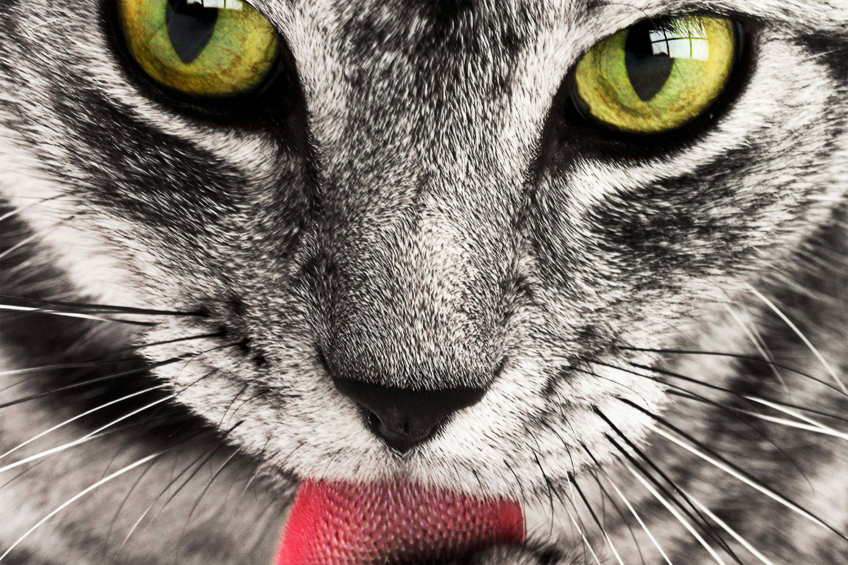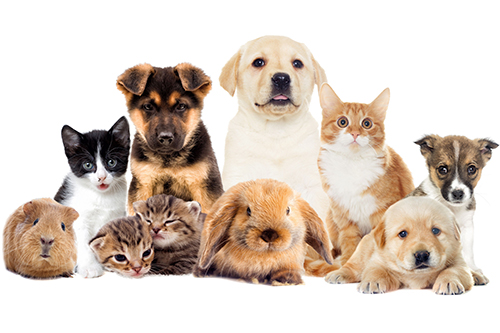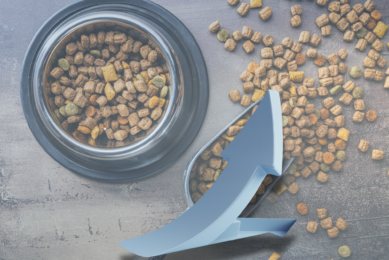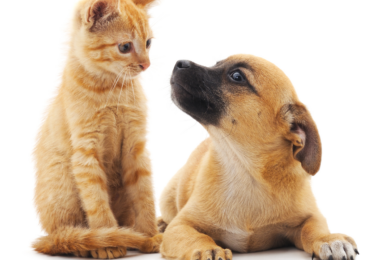Cat hairballs: Digestibility and the impact of fibre evaluated

Veterinarians often face the challenge of helping cat owners limit the extent to which their cats produce hairballs. The problem is a nuisance for both the cat and the owner, and could even lead to morbidity. This report takes a nutritional viewpoint from different studies to assess the impact of hairballs on nutrient digestibility and strategies to help control the formation of hairballs.
On average, cats spend a quarter of the day licking. This natural hygienic behaviour, which uses the cat’s rough tongue, favours the formation of hairballs or trichobezoars. When living in groups, co-grooming is also an important social bonding behaviour. In stressful situations, cats are prone to excessive grooming, which increases the formation of hairballs and in some cases, inflammation of the colonic mucosa. Most of the ingested hair passes through the gastrointestinal tract and is expelled as undigested hair in the faeces.
Nutrient digestibility in hair vs non-hair samples

In a study published in the Journal of Feline Medicine and Surgery, researchers assessed the effect of grooming behaviour on the apparent digestibility of nutrients in domestic cats (Felis catus) by comparing hair-included faeces and hair-removed faeces. In this study, they used adult domestic cats with a mean body weight of 4.3 kg.
The conventional method was used to calculate the cats’ apparent nutrient digestibility. Using hair-included faecal samples, the digestibility of dry matter, crude protein, crude ash, acid detergent fibre (ADF) and neutral detergent fibre (NDF) was underestimated by about 6%, 7%, 14%, 12% and 10%, respectively. However, they found no significant differences in nutrient digestibility of crude fat, calcium and phosphorus between the hair-included faeces or hair-removed faeces.
The apparent digestibility of amino acids aspartate, serine and glycine in hair-removed faeces showed higher values than those in hair-included faeces by about 6%, 6% and 3%, respectively. Cysteine digestibility in hair-removed faeces was 20% higher than that of hair-included faeces. According to previous studies, cat hair consists mainly of amino acids and cysteine makes up the largest proportion (15.8%) of the various amino acids.
Overall, the conventional apparent digestibility of protein and amino acids was underestimated when hair-included faecal samples were used to calculate the cats’ nutrient digestibility. The researchers concluded that removing hair from faeces is a more precise method with which to evaluate the apparent nutrient digestibility of domestic cats.
The combined use of sugarcane fibre and protease enzymes helps to prevent hairball excretion in the faeces of cats.
Fibre source for hairball management
In general, studies show that commercial diets formulated to reduce the incidence of hairballs contain increased levels of insoluble fibre to improve gastric motility and gastric emptying.
The grooming habits of cats often lead to the formation of masses (trichobezoars) or hairballs that are usually regurgitated. In efforts to control this phenomenon, some pet food companies have created diets intended to force the concretion into the intestines, primarily by supplementing large quantities of insoluble fibre such as cellulose.
The anti-hairball effect of dietary cellulose as shown in cats is probably based on 2 synergistic mechanisms:
- Cellulose may prevent the agglomeration of single strands of hair in the stomach, thus increasing the transfer of loose hairs into the duodenum. This effect may be greater for fibrillated cellulose prepared by modern and sophisticated milling technology and facilitating the formation of an insoluble fibre network.
- Cellulose ingestion also accelerates the transit time of digesta, propelling duodenal hair into the faeces.
Together, the 2 mechanisms lead to the observed cellulose-induced faecal excretion of hair.
It is clear from previous studies that the type and amount of cellulose or insoluble fibre determines the efficacy. In a study published in the Journal of Animal Physiology and Animal Nutrition, researchers assessed Miscanthus grass as a potential source of insoluble fibre to enhance the passage of hairballs in the gastrointestinal tract of cats. Experimental diets were composed of 90% basal ration and 10% of either Miscanthus grass or rice flour. Their results showed that Miscanthus grass effectively reduces hairball size and total faecal hair, indicating an increased ability of cats to eliminate hair masses through faecal excretion and reduce their regurgitation in a home setting.
In a similar study published in the Journal of Nutritional Science, researchers found that sugarcane fibre reduces faecal hairball elimination in cats and concluded that this may have clinical applications for the prevention of health problems related to hairballs in cats.
Use of keratinolytic enzymes
Increasing fibre concentration in cat diets is one strategy to minimise hairball formation, but for some scientists, this strategy is not fully effective. Because cat hair is formed mostly by keratin, the addition of keratinases in the diets might be an alternative strategy for hairball control. Studies show that cat hair consists of 85% keratin, which cannot be degraded by endogenous enzymes under physiological conditions.
In a recent study published in the Journal of Animal Physiology and Animal Nutrition, the combined use of a keratinolytic enzyme complex (a complex of proteases from Bacillus licheniformis) and sugarcane fibre as a source of insoluble fibre to reduce hairball excretion in faeces was evaluated. The study showed that the addition of either insoluble fibre or enzyme complex alone does not affect the number of hairballs excreted in the faeces. However, the combined use of insoluble fibre and the enzyme complex significantly reduced the total number of hairballs excreted.
The researchers also found that, although insoluble fibres are the main dietary component used to control the formation of hairballs, the results of this nutritional strategy are inconsistent. They attributed the variability in findings to differences in the amounts of fibre ingested, intrinsic characteristics of the fibres or the methods of hairball quantification.
The researchers concluded: “The combined use of sugarcane fibre and protease enzymes helps to prevent hairball excretion in the faeces of cats. The application of this strategy can be adopted for this purpose; however, methods for faecal hairball quantification must be improved and further research should examine nutritional strategies that prevent hairball formation without impacting digestibility.”
Overall, sugarcane and Miscanthus grass are potential sources of insoluble fibre for the control of hairball excretion in cats.











